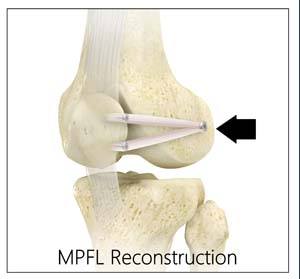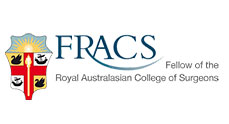
Medial collateral ligament (MCL) is one of the four major ligaments of the knee that connects the femur (thigh bone) to the tibia (shin bone) and is present on the inside of the knee joint. This ligament helps stabilize the knee. An injury to the MCL may occur as a result of direct impact to the knee. An MCL injury can result in a minor stretch (sprain) or a partial or complete tear of the ligament. The most common symptoms following an MCL injury include pain, swelling, and joint instability. If the overall stability of the knee is intact, your doctor may recommend non-surgical methods including physical therapy, and bracing. Surgical reconstruction is recommended for MCL tears which fail to heal or those associated with other ligament injuries. MCL reconstruction is a minimally invasive technique that involves use of a tendon graft to reconstruct the injured MCL.
Indications and Contraindications
Medial collateral ligament reconstruction is indicated in patients with chronic MCL instability despite appropriate nonsurgical treatment.
Medial collateral ligament reconstruction is contraindicated in patients with degenerative changes in the medial or lateral compartment, active infection, ligament instability, and simultaneous presence of other chronic diseases that can hamper surgical management or compliance to postoperative rehabilitation instructions.
Diagnosis
An MCL injury can be diagnosed with a thorough physical examination of the knee and diagnostic imaging tests such as X-rays, arthroscopy, and MRI scans. X-rays may help rule out any fractures. In addition, your doctor will often perform valgus stress test to check for the stability of MCL. In this test, the knee is bent approximately at 30° and pressure is applied on the outside surface of the knee, excessive pain or laxity is indicative of medial collateral ligament injury.
Medial Collateral Ligament Reconstruction – Procedure
The procedure is performed under general anesthesia. Arthroscopic examination of the knee is performed to rule out any associated injuries including anterior cruciate ligament (ACL) and posterior cruciate ligament (PCL) tears.
The surgical procedure of medial collateral ligament reconstruction involves the following steps:
- An Achilles tendon allograft is prepared
- To expose the entire MCL, a 3 cm incision is made longitudinally over the medial femoral condyle.
- A guide pin is carefully inserted into the medial epicondyle, avoiding accidental penetration into the intercondylar notch. Fluoroscopy may be used to aid in identifying the placement of the guide pin.
- For placing the graft, a tunnel is created from the guide pin to the anatomic insertion of the MCL, on the tibia, using the index finger and Metzenbaum scissors.
- A non-absorbable suture loop is wrapped around the guide pin with the other end placed distally, under the skin in the tunnel.
- The distal suture is held against the tibia at the estimated anatomic insertion.
- The isometric point for tibia is noted.
- Debridement of the soft tissue around the femur is performed to assist the insertion of the Achilles bone plug.
- The Achilles tendon allograft is inserted in the femoral tunnel and fixed using interference screws.
- The MCL graft is made taut, with the knee at 20° flexion under varus stress, and fixed to the tibia with a screw and a spiked washer.
- The tension in the graft is confirmed and subcutaneous tissue and skin are closed.
Postoperative Care
In the first two weeks after the surgery, toe-touch and weight-bearing is allowed with the knee brace locked in full extension. After 2 weeks 0° to 30° of motion is allowed at the knee. At 4 weeks, knee flexion is allowed from 60° to 90° of motion and full weight bearing is permitted. At 6 weeks, the brace is removed and you are allowed to perform full range of motion. Crutches are often required until you regain your normal strength.
Risks and Complications
Knee stiffness and residual instability are the most common complications associated with MCL reconstruction.
Related Topics
- Arthroscopy of the Knee Joint
- Articular Cartilage Repair
- Total Knee Replacement (TKR)
- Anterior Cruciate Ligament (ACL) Reconstruction
- Unicondylar Knee Replacement
- Revision Knee Replacement
- Meniscus Surgery
- Medial Collateral Ligament Reconstruction
- Posterior Cruciate Ligament Tear & Reconstruction
- Meniscus Transplant





